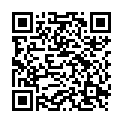|
|
|
| Module code: MAA-2.x.6 |
|
1V+1U (2 hours per week) |
|
3 |
| Semester: 1 |
| Mandatory course: yes |
Language of instruction:
English |
Assessment:
Student research project
[updated 30.07.2021]
|
MAA-2.x.6 Architecture, Master, ASPO 01.10.2012
, semester 1, mandatory course
|
30 class hours (= 22.5 clock hours) over a 15-week period.
The total student study time is 90 hours (equivalent to 3 ECTS credits).
There are therefore 67.5 hours available for class preparation and follow-up work and exam preparation.
|
Recommended prerequisites (modules):
None.
|
Recommended as prerequisite for:
|
Module coordinator:
N.N. |
Lecturer:
N.N.
[updated 29.10.2013]
|
Learning outcomes:
Based on a basic understanding of objects and space, students will familiarize themselves with the field of temporary construction.
After successfully completing this module, students will have acquired analytical, typological and constructive knowledge and be able to translate this into creative design concepts. Students will be able to recognize the fundamentally different requirements for temporary structures. The goal is to provide answers to specific questions from the field of temporary construction based on a selection of learned or found solutions.
In this context the aspect of “appropriateness” plays a major role.
[updated 30.07.2021]
|
Module content:
Students will learn that the respective building tasks are not only about the functional fulfilment of necessities, but that the creative aspect is also very important, because the designs are often free from the burdensome constraints of permanent durability and thus, allow students a lot of experimental freedom.
[updated 30.07.2021]
|
Teaching methods/Media:
Lecture with multimedia visualization technologies. Guided tutorial.
[updated 30.07.2021]
|
Recommended or required reading:
References to literature and research options are topic-related and will be announced at the beginning of the module.
[updated 30.07.2021]
|


